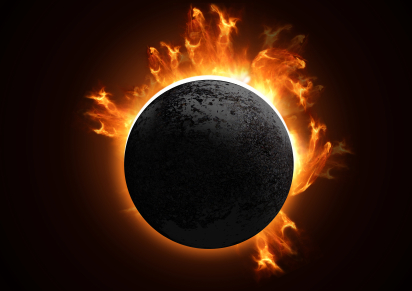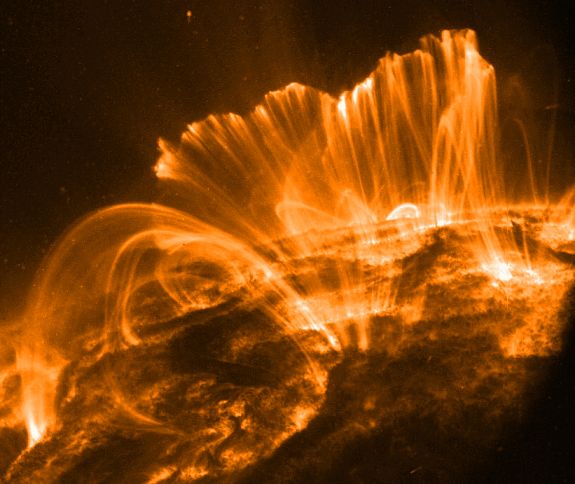- Solar eclipse
A solar eclipse is when the Moon comes in between the Sun and the Earth, creating a shadow a few hundred kilometres wide on the Earth.
- How big exactly is the Sun?
The Sun is a small to medium-sized star 1, 392, 000 km (0.86 million miles) in diameter. It weighs just under 2000 trillion trillion tonnes.
- What is the Sun's crown?
The Sun's crown is its corona, its glowing white hot atmosphere seen only as a halo when the rest of the Sun's disc is blotted out by the Moon in a solar eclipse.
- How hot is the Sun?
The surface of the Sun is a phenomenal 6000 degree celcius and would melt absolutely anything. But its core is thousands of times hotter at over 16 million degree celcius!
- What makes the Sun burn?
The Sun get its heat from nuclear fusion. Huge pressures deep inside the Sun force the nuclei (cores) of hydrogen atoms to fuse together to make helium atoms, releasing huge amounts of nuclear energy.
The Sun is a middle-aged star and probably formed about five billion years ago. It will probably burn for another five billion years and then die in a blaze so bright that the Earth will be scorched right out of existence.
- What is the solar wind?
The solar wind is the stream of radioactive particles constantly blowing out from the Sun at hundreds of kilometres per second. (The Earth is protected from the solar wind by its magnetic field, but at the poles, the solar wind interacts with the Earth's atmosphere to create the aurora borealis or northern lights.)
- What are solar flares?
Flares are eruptions from the Sun's surface that fountain into space with the energy of one million atom bombs for about five minutes. (They are similar to solar prominences, the giant flame-like tongues of hot hydrogen that loop 100 000km/60000 miles into space.)
- Sunpots
Sunpots are dark blotches seen on the Sun's surface. They are thousands of kilometres across, amd usually occur in pairs. They are dark as they are slightly less hot than the rest of the surface. As the Sun rotates, they slowly cross its face - in about 37 days at the equator and 26 days at the Poles. The average number of spots seems to reach the maximum every 11 years, and many scientists believe that these sunspot maximums are linked to periods of stormier weather on the Earth.
- Parts of the Sun
Now, let watch an interesting documentary on the formation of the Sun. Enjoy!







0 comments:
Post a Comment